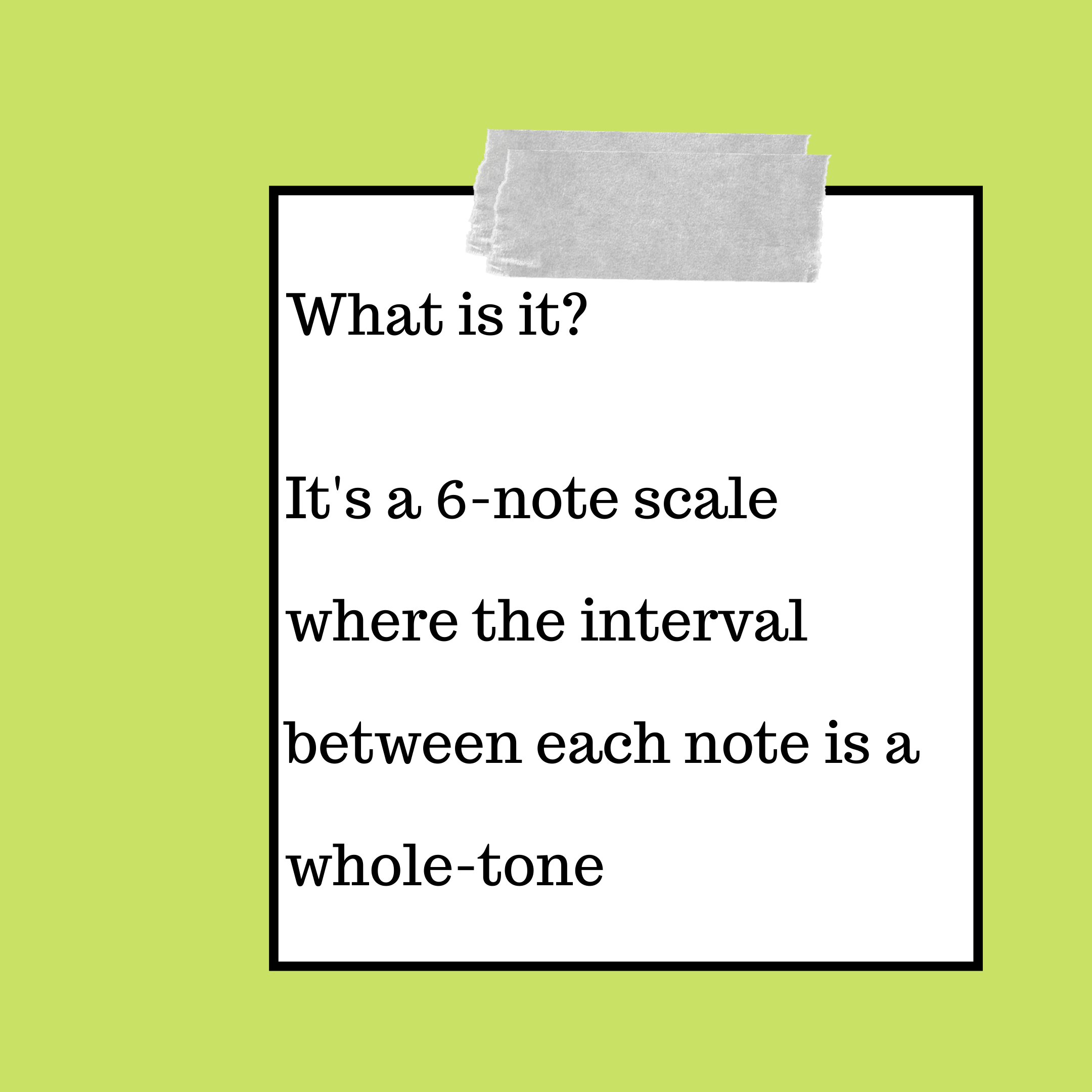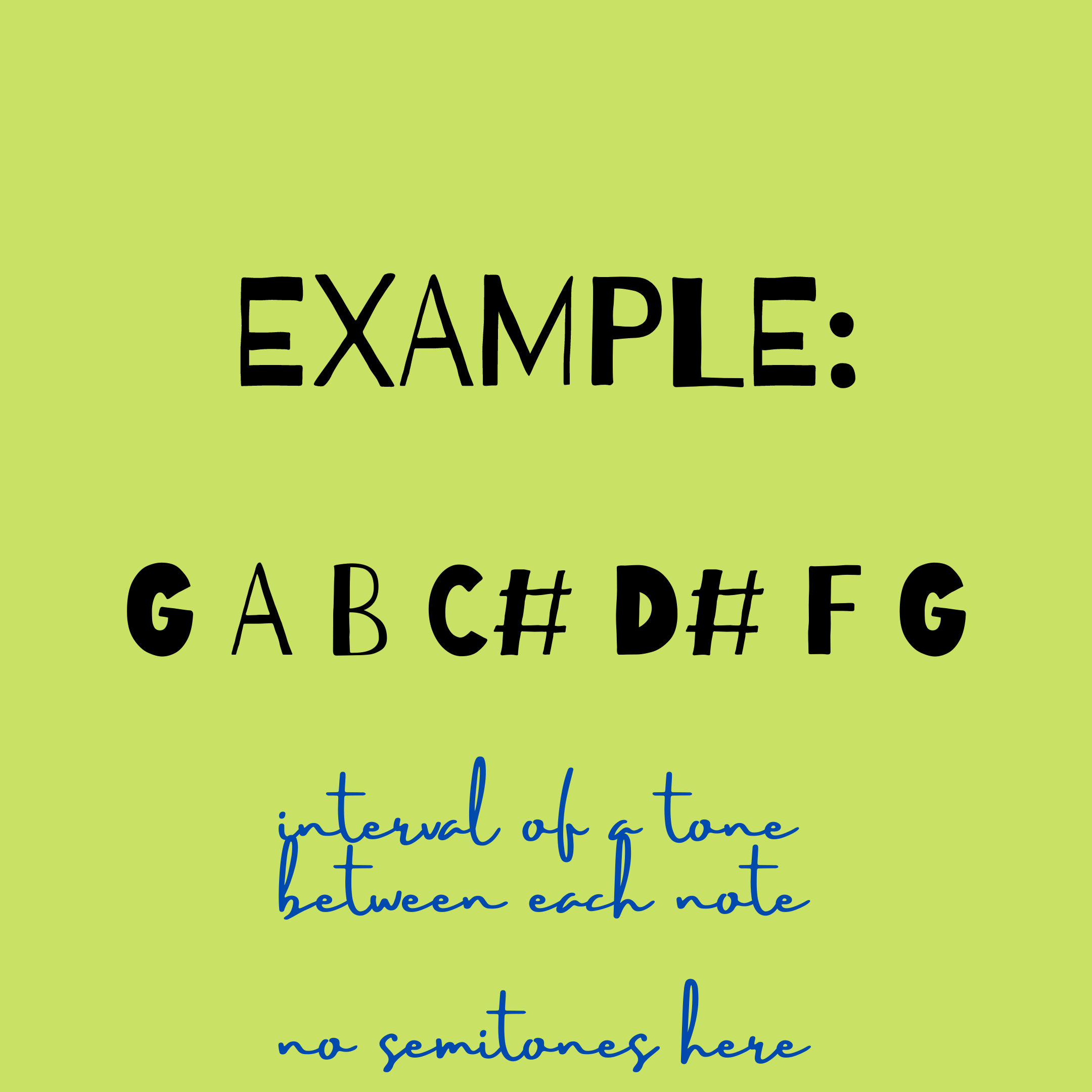What’s a whole-tone scale?
In this post I’m going to tell you about the beautiful thing that is the whole-tone scale. I have to say that it’s a really simple and easy way to sound very modern and “out-of-this-world” and there are a couple of reasons why it’s so simple, so let’s get started.
So, what is it? Well, it’s a 6-note scale, and between each note there’s an interval of a whole-tone. So straight away we can see that it’s different to a “normal” scale such as a major scale, which has 7 notes and is comprised of a mixture of whole-tone and semitone intervals.
Let’s look at an example. If we start the scale on G, the next note in the scale is a whole-tone up from that, so it’s A, then a whole-tone up from that is B, then if you keep going up in whole-tones, it’s C#, then D#, then F, then we’re back to G again.
The really interesting thing about the whole-tone scale is that, because every note is evenly spaced with the interval of a tone, there’s only really two whole-tone scales ever! So if you look at the notes in the above example, you could start your scale on any of those notes and it would contain all those same notes, i.e. B whole-tone scale, is essentially the same as G whole-tone scale. Great, so that means less practice!
What’s the other whole-tone scale then? I hear you ask. If you simply go up/down a semi-tone from all or any of the notes from the example above, you’ll find it. It’s: Ab, Bb, C, D, E, F#. And, once again, you could have any of those notes as the starting note and it would contain all the same notes.
OK, now onto when or where you’d use this interesting scale. It’s mainly used over dominant 7 chords and this is because it contains the key chord tones, the 3rd and the 7th, not to mention the root and the 9th. It also contains the interesting, colourful chord tones of the #11th and the b13th. Let’s take G7 as the example. The first note of the scale is G, which is the root of G7. Then it’s A, which is the 9th, then B, which is the 3rd. Onto C#, the #11th, then D#/Eb, which is the b13th. And finally F, the 7th.
So in conclusion, it’s a really simple scale, which is easy to learn and practice. It sounds modern and “out-of-this-world”, so you should definitely have a go at using it. And once you’ve mastered it you can move onto the whole-tone pentatonic and augmented triads.
Thanks for checking out my website and reading this post!




